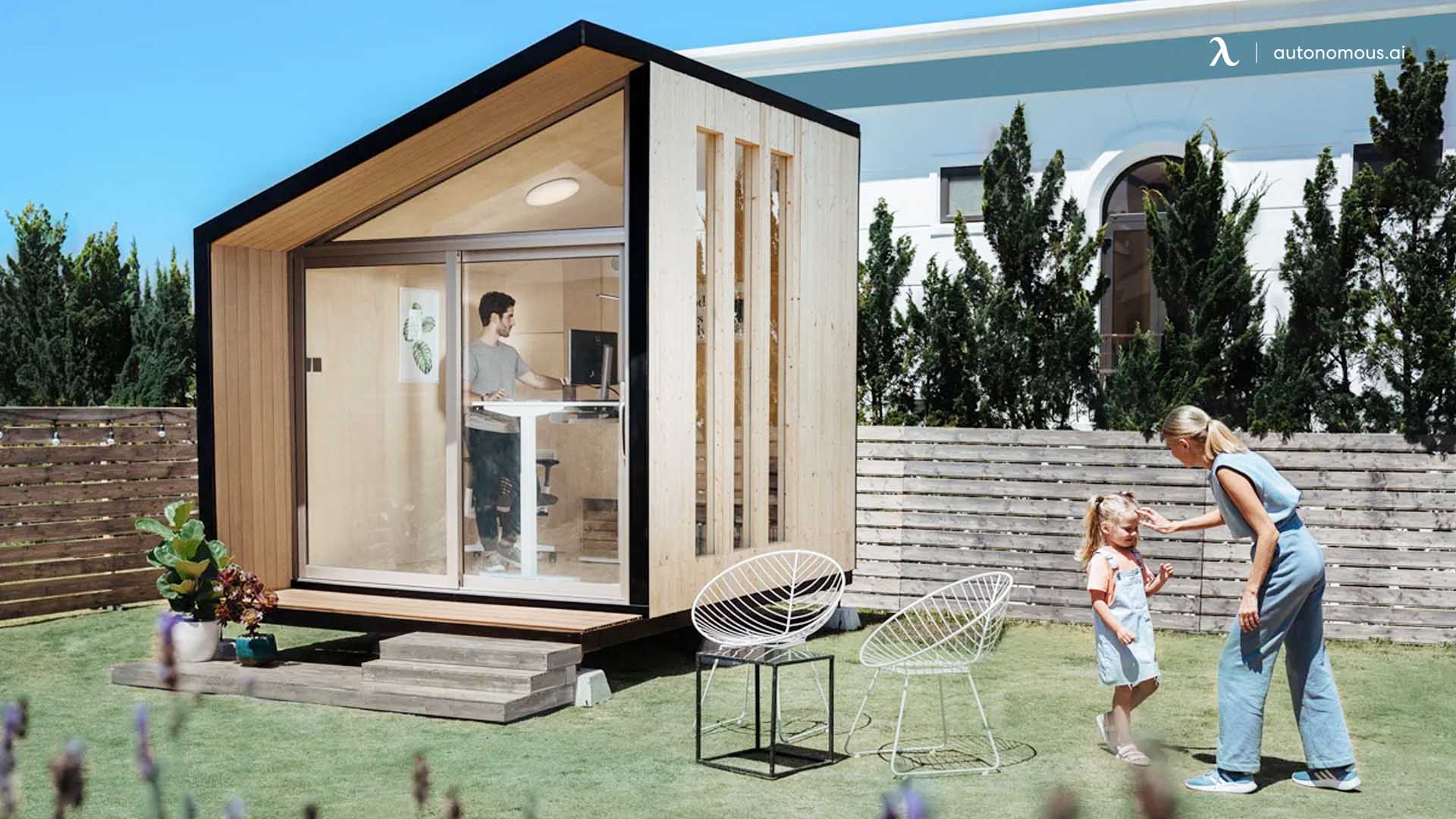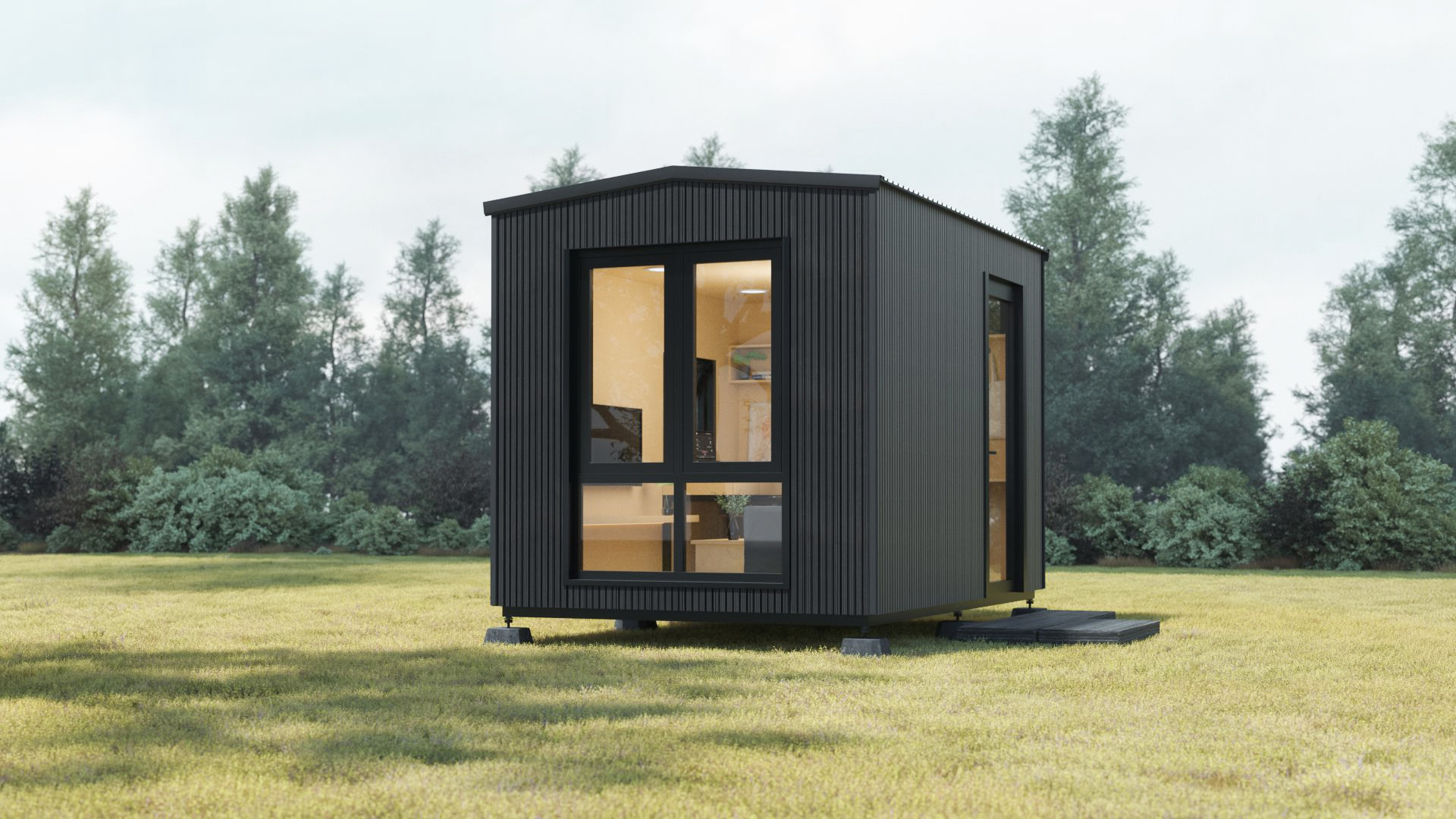
A Guide to Sustainable Building Materials for Your ADUs
ADUs are a popular housing alternative. When designing an ADU, using a sustainable material is a great approach to reducing your environmental impact. Nevertheless, with so many materials available, deciding where to begin may be difficult.
Therefore, this article will help you by putting together this guide on sustainable building materials for your ADUs.
Qualities of Sustainable Building Materials
To qualify as sustainable, a building material must meet certain criteria that demonstrate its positive impact on the environment. Here are some of those criteria:
1. Locally Sourced
When materials are produced in distant locations, they must be delivered across long distances. The shipment process typically involves a truck, rail, or ship as a method of transportation. Each of these vehicles use a lot of energy from fossil fuels. They also emit CO2 and other greenhouse gasses into the environment.
Sourcing materials locally ensures that the negative environmental impact from transportation is as minimal as possible. It reduces the need for long-distance shipping and transit. Moreover, buying materials locally can continuously support local businesses, which will lead to local economic development.
2. Recyclable
In sustainable construction, the recyclability of building materials is very important. Recycling materials can lower waste, conserve resources, and help reduce carbon emissions. Some of the most popular recyclable materials are steel, wood, concrete, and bricks.
3. Durable
To be considered durable, materials should be able to endure wear and tear in the long run. They need to withstand exposure to harsh environmental conditions such as moisture and extreme temperatures. Additionally, they need to be strong and stable to prevent structural damage.
Durable materials are sustainable because they’re made to last, minimizing the need for frequent replacements. Furthermore, by using long-lasting materials, you can reduce the amount of waste from the construction process.
4. Reusable
Materials such as silica and plastic might not be the most environment-friendly options to build construction. However, it’s a different case if they’re made from throwaway materials that have been recycled. This will not only help to reduce waste but also conserves non-renewable resources.
5. Made from Renewable Sources
Companies can reduce their environmental impact by using renewable resources in their manufacturing processes. This might either involve utilizing recycled materials or gaining raw materials from environmentally friendly sources.
Benefits of Using a Sustainable Material for Building
Here are some benefits of sustainable building material:
1. Cost Efficiency
Green buildings, which are in high demand right now, are built to consume less water and energy. Because of that, building owners can save on operating expenses. The frequent use of renewable energy sources, such as solar or wind power, will also help to lower energy bills over time.
2. Energy Efficiency
If you build a construction without considering sustainability, a significant amount of resources can be wasted.
Popular construction materials, such as concrete and steel, need a significant amount of energy to produce. The processing can also have severe environmental consequences. This is why sustainable resources are more energy efficient.
3. Environmental Protection
The use of recycled materials in buildings contributes significantly to environmental protection and waste reduction. By committing to sustainable practices, businesses can reduce its carbon footprint and demonstrate its dedication to social responsibility.
Constructors can reduce the used energy by utilizing alternative eco-friendly building materials to reduce a building's carbon footprint. Sustainable materials that may be purchased locally are another alternative that helps to reduce carbon emissions caused by transportation.
4. Waste Reduction
Good waste management can give significant benefits to the construction industry. Recycling resources, for example, may reduce waste created on job sites, which will lower waste disposal costs as well as the cost of starting a new project.
Sustainable buildings can also generate innovative waste management strategies. Instead of throwing away demolition waste, you can turn materials such as sand and burned coal into new items that might even have aesthetic benefits.
5. Healthy Living
According to the Environmental Protection Agency (EPA), indoor air may be up to five times more contaminated than outside air. This is caused by a variety of factors, such as construction materials, furniture, cleaning chemicals, and other indoor contaminants.
Sustainable building materials are frequently made from natural and non-toxic resources, which can lower the risk of chemical exposure. Furthermore, many sustainable materials are low emitting, which means they emit less dangerous pollutants into the air.
6. Boosts the Economy
According to the US Green Building Council (USGBC), the sustainable construction industry has contributed more than $134.3 billion to American employees. This suggests that there is a rising need in the construction sector for professionals in the field.
The sales of green building materials can also result in the establishment of new businesses and sectors centered on sustainability. This, in turn, has the potential to provide new job opportunities and boost economic growth.
Types of Sustainable Building Materials
Here are some examples of sustainable architecture materials you can consider for your ADUs:
1. Bamboo
Its fast-growing ability makes bamboo a highly renewable resource. While trees used for lumber can take several decades to reach maturity, bamboo only needs three to five years.
Bamboo is also a highly durable sustainable building material despite being lightweight. Its strength might even exceed concrete and brick. It can withstand pressure and stress without breaking or warping. This feature makes it suitable for structural elements, flooring, or walls. You can even use it to build furniture.
2. Composite Wood
Composite wood, also known as engineered wood or manufactured wood, refers to a type of wood product made by combining real wood pieces, sawdust, shredded wood fibers, and adhesives. The mixing process will create a material that resembles wood but is a lot stronger.
Composite wood is frequently made from discarded scrap wood, making it an environmentally beneficial and sustainable solution. It has a wide range of building uses, including framing, flooring, and furniture. With those qualities, you might even consider it as the best material for sheds.
3. Straw Bales
Straw bales are eco-friendly building materials that are often utilized as shed roofing materials. However, it’s not impossible to use them as the primary structure for a building. Their soundproofing ability makes them perfect as filling materials between columns.
Other advantages of straw bales are its excellent fire resistance and insulation properties. They can help you cut heating and cooling costs in a building because they don’t let air through.
Straw is an abundant, renewable material that is frequently seen as a waste product. By using straw bales as a construction material, builders can reduce waste and reuse a resource that would otherwise be wasted.
4. Sheep’s Wool
Wool is biodegradable, meaning it can degrade naturally without releasing hazardous chemicals into the environment. It is also recyclable and considered as a sustainable material for building. Because of its resilience, you can use it for an extended period of time before needing to be replaced.
5. Rammed Earth
Actually, rammed earth refers to a building technique rather than a material itself. To build something with this technique, you need to combine a few materials, such as lime, chalk, or gravel, and compact them together.
Rammed earth is a sustainable solution that uses natural resources, needs little energy to build, and has a low environmental effect. It’s also extremely durable and has excellent insulation properties.
6. Recycled Steel
Although producing new steel from raw materials requires a significant amount of energy and resources, recycled steel comes in as an eco-friendly alternative. It’s created by melting waste steel to form a new product. This technique uses a lot less energy than making new steel from raw sources.
Steel is also highly durable. It’s able to last a long time without warping. Furthermore, it’s also water and fire-resistant.
Autonomous ADUs - An Eco-Friendly Building
ADU stands for an accessory dwelling unit. Sometimes, it’s also referred to as a secondary suite. It serves as an additional unit that’s detached from your main house but is typically still located within the same land.
People build ADUs for several reasons. Some of them want to gain extra income by renting it. Others just want to have some personal space outside of their houses. These types of people usually utilize their ADUs for home office pods, entertainment, or resting purposes.
Whatever your reason for owning an ADU is, it’s always a good idea to invest in an eco-friendly one. The good news is that you don’t need to build one from scratch. In this article, you can find an eco-friendly prefab ADU that will suit your needs. You can utilize it as a work pod, backyard guesthouse, studio shed, or any other purpose.
Here are our recommendations:
1. Autonomous WorkPod
The Autonomous WorkPod is a self-contained workstation that is designed to give a private, enjoyable, and productive working environment. Its self-contained construction makes it easy to put in any indoor or outdoor area. By having this pod, you can get a focused working environment away from distractions.
This work pod is constructed of high-quality components. The walls alone consist of six layers of five durable materials, which are plywood, wooden frame, honeycomb paper, and composite wood. Each of them is not only sustainable material for building but also provides the users with sound insulation and a good ventilation system.
The waterproof materials for the building can withstand a wide range of temperatures, making the pod resistant to wind, rain, snow, and humidity. This means that the WorkPod will stay effective and comfortable to use even during a strong storm or in a high-humidity location. Its resistance to these factors is important to protect the interior of the pod from damage.
The Autonomous WorkPod can be placed on any type of flooring. It can do that thanks to the steel base that can promote uniform weight distribution on uneven ground. Therefore, whether you want to place it on gravel, brick, grass, or another terrain, it will still stand strong. In fact, it can hold up to 2.9 tons of weight.
The WorkPod features a sophisticated exterior design that combines wood, metal, and glass. It measures 11.7 ft x 8.3 ft on the outside. Despite its small size, it has enough room for a decent-sized table, chair, and bookshelf. Furthermore, you won’t feel cramped because its floor-to-ceiling glass doors allow as much natural light as possible.
This pod comes in several options. You can have it assembled already, or you can assemble it yourself. Of course, the former requires you to pay additional costs. You can also choose one that’s already equipped with furniture. Including those options, the price ranges from $17,900 to $23,900.

Autonomous WorkPod
| Dimension | 8’6’’W x 11’9’’L x 11’H |
| Ceiling height | 6’10’’ to 9’4’’ |
| Window material | Wooden frame, 5/16” tempered glass |
| Door material | Anodized aluminum frame, 5/16” tempered glass |
| Material | Siding: bitumen, housewrap, vinyl silding Roof: bitumen, housewrap, shingles roof Floor: plywood Balcony: composite wood |
| Include | Optional: Autonomous Desk, ErgoChair Pro+, Dual Monitor Arm, Cable Tray, Steel Cabinet, Anti-Fatigue Mat. Always included: Electrical Cabinet & Bookshelf |
| Floorspace | 98 square feet |
| Capacity | 2.9 tons |
2. Autonomous WorkPod Versatile
From the outside, this prebuilt studio pod looks almost the same as the work pod. However, there are a few notable differences that you can find.
First, one of the main differences between this pod and the WorkPod is its size. The Autonomous WorkPod Versatile measures 12.5 ft x 8.4 ft, slightly larger than the previous one.
Apparently, size matters, although not that significantly. This pod offers features that are slightly one step ahead of the WorkPod - its ability to withstand the weather, for example. While the previous pod can work perfectly under 45 - 100°F temperature, this can withstand a bigger range, which is 40 - 105°F.
Furthermore, the minimum wattage of this studio shed is also higher than the work pod. While the work pod can work with a 100W, the studio pod requires you to have at least 150W.
Out of all the differences, the most significant one might be the materials. Autonomous WorkPod Versatile’s walls consist of seven layers of materials which are made from plywood, steel frame, honeycomb paper, bitumen, house wrap, and vinyl as the shed siding panel.
The durability and sustainability of the outer layer materials ensure that the exterior is weather-resistant, waterproof, and aesthetically pleasing. On the other hand, the insulation in the middle can act as soundproofing and a durable frame.
Same as the WorkPod, you can get this with assembly, without assembly, with furniture, or without furniture. The price range is slightly higher, which is $19,900 to $26,900.
With only tiny differences, it would seem like WorkPod is a better option for its price. However, that’s because it’s specifically designed for working. With its larger size, WorkPod Versatile gives you better flexibility of utilizing it.

Autonomous WorkPod Versatile
| Dimension | 8’4”W x 12’6”L x 9’10”H |
| Floorspace | 105 square feet |
| Ceiling height | 7’3” |
| Weight capacity | 2.9 tons |
| Pedestal | 18”W x 43”L x 7” |
| Window & door material | Powder-coated aluminum, 5/16” tempered glass |
| Material | Siding: plywood 1/2”, steel frame, honeycomb paper, plywood 3/8”, bitume, housewrap, vinyl siding Roof: roof shingles Floor: plywood Pedestal: steel frame & wood plastic composite |
| Electrical devices | RCB, Wall outlet, Ceiling light switch, Ceiling light, Ventilator switch, Ventilator, Ethernet wall port, 66ft power cable with 2 connectors |
| Include | Optional: Cabinet, Desk, Small & Big Bookshelf, TV Shelf, Foldable Sofa Table, Convertible Sofa Bed. Always included: Electrical Cabinet |
| Power input | Maximum voltage : 110V AC (US standard) Maximum current : 25A Maximum power dissipation : 2750W |
The Bottom Line
Sustainable architecture materials are a great way to lower your carbon footprint for a more sustainable future. There are several eco-friendly building materials available, ranging from recycled materials to locally produced resources. They provide numerous benefits, such as better energy efficiency and durability.
You can guarantee that your ADU is not just a comfortable and practical living area, but also an ecologically conscientious one by selecting one of the products mentioned.
Spread the word
.svg)








